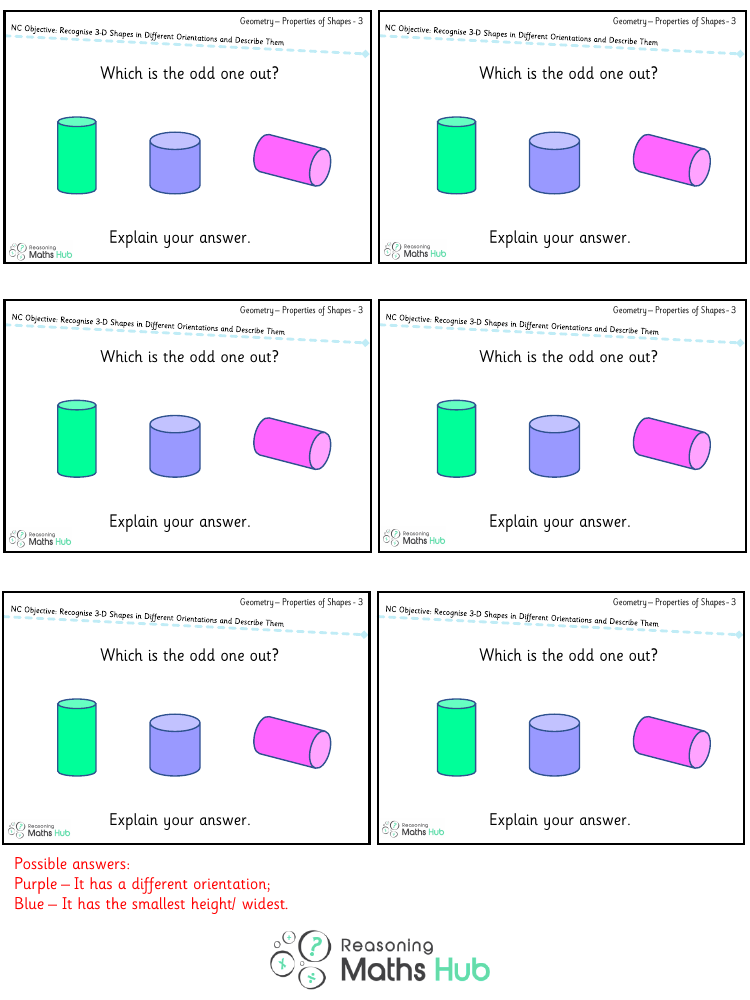Recognise 3-d shapes in different orientations and describe them 2 - Reasoning

Maths Resource Description
Understanding three-dimensional shapes and their properties is an essential aspect of geometry education. In this session, students are encouraged to recognise and describe 3D shapes, regardless of their orientation. This skill is crucial as it allows learners to visualise and identify shapes in various real-world contexts, where shapes may not always be presented in a standard position. The lesson emphasises reasoning, requiring students to go beyond mere recognition and to articulate the distinctive features of each shape, such as the number of faces, edges, and vertices.
During this interactive segment, students might be presented with a range of 3D shapes like cubes, spheres, cylinders, cones, and pyramids, shown from different angles and perspectives. They are then tasked with describing these shapes, considering how their appearance changes with orientation. For instance, a cube rotated might still display its six faces, but the squares might appear as different quadrilaterals from various viewpoints. This exercise not only reinforces their understanding of geometric vocabulary but also enhances spatial awareness and critical thinking, enabling them to appreciate the consistent properties of 3D shapes despite changes in orientation.
